
Anhatomirim Environmental Protection Area is a protected area to the north of Florianópolis on the coast of Santa Catarina, Brazil.
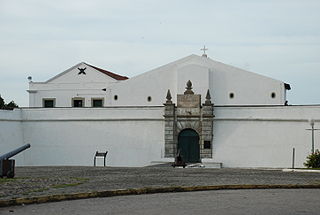
Forte de São João Batista do Brum is a fort located in Recife, Pernambuco in Brazil.

Rogério Zimmermann is a Brazilian football coach and former player who played as a right back. He is the current head coach of Brasil de Pelotas.
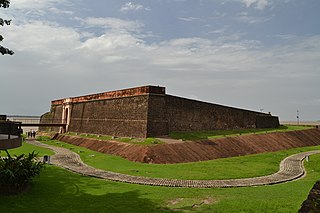
Forte do Presépio is a fort located in Belém, Pará, Brazil. It was built in 1616 by Francisco Caldeira Castelo Branco at Maúri Point, a promontory on the right bank of the mouth of the Guamá River and Guajará Bay. The first chapel in Belém was located in the fort. It was a temporary structure and was dedicated to Our Lady of Grace, and was moved a few years later to the current Largo da Sé, and became the Cathedral of Our Lady of Grace in the 18th century. The fort was listed as a historic structure by the National Historic and Artistic Heritage Institute in 1961.

Fortaleza de Nossa Senhora da Assunção is a fort located in Fortaleza, Ceará in Brazil.
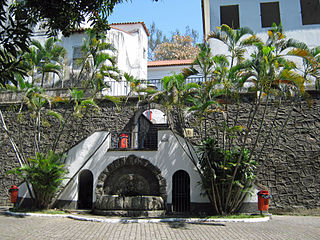
Fortaleza de Nossa Senhora da Conceição is a fort located in Rio de Janeiro, Brazil.
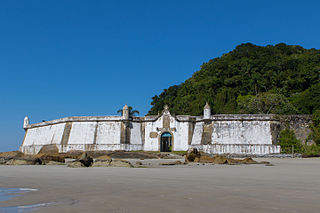
Fortaleza de Nossa Senhora dos Prazeres is a fort located in Paranaguá, Paraná in Brazil.

Forte de Nossa Senhora dos Remédios is a fort located on the island of Fernando de Noronha in the state of Pernambuco in Brazil.
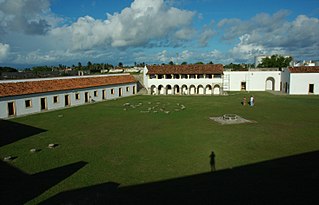
Forte de Santa Catarina is a fort located in Cabedelo, Paraíba in Brazil.
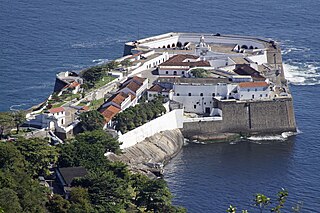
Fortaleza de Santa Cruz da Barra is a fort located in Niterói, Rio de Janeiro in Brazil.
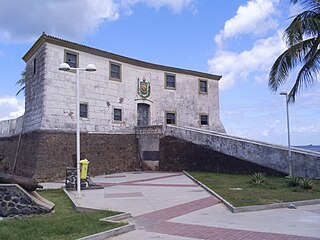
Forte de Santa Maria is a fort located in Salvador, Bahia in Brazil. It is also known as the Fortim de Santa Maria. It retains much of its original structure of the 17th century, including its broad, stone curtain walls. The fort is in the shape of a heptagon and is accessed via a narrow embankment. The fort was listed as a historic structure by the National Institute of Historic and Artistic Heritage (IPHAN) in 1938. It is closed to the public, is not maintained by federal or state institutions and is falling into a state of disrepair.

Forte de Santo Antônio da Barra is a fort located in Salvador, Bahia, Brazil. It was constructed to guard the entrance to the Bay of All Saints, during the time of the Portuguese Empire. The first Portuguese fortification erected in Bahia was likely built in 1501, on the same area now occupied by the Forte de Santo Antônio da Barra. The foundation stone of that first fortification was placed in an area called Ponta do Padrão, now known as the Largo do Farol da Barra, the broad public square in front of the fort. The fort also houses the 22 metres (72 ft)-high Barra Lighthouse and the Nautical Museum of Bahia. The Santo Antônio da Barra Fort is protected as a historic structures by the National Institute of Historic and Artistic Heritage.

Forte de São Diogo is a fort located in Salvador, Bahia Brazil.
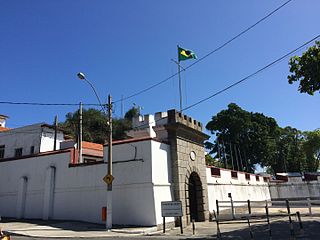
Forte de São Domingos de Gragoatá is a fort located in Niterói, Rio de Janeiro in Brazil.

Forte de São João da Bertioga is a fort located on Santo Amaro Island, São Paulo in Brazil.
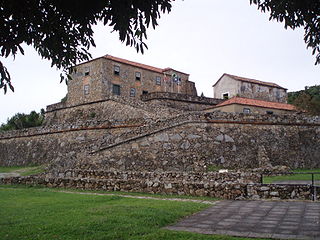
Fortaleza de São José da Ponta Grossa is a fort located on the northern end of Santa Catarina Island in the municipality of Florianópolis, capital of Santa Catarina state, in southern Brazil.
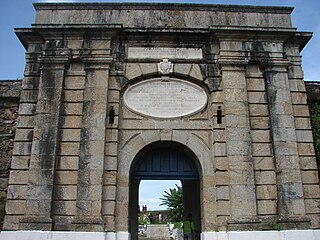
Forte de São Luís is a fort located in Niterói, Rio de Janeiro in Brazil.
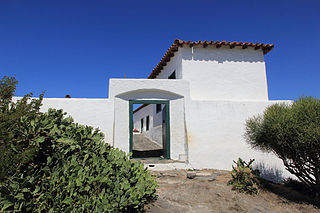
Forte de São Mateus do Cabo Frio is a fort located Cabo Frio, Rio de Janeiro in Brazil.

Forte de São Tiago das Cinco Pontas is a fort located in Recife, Pernambuco in Brazil.
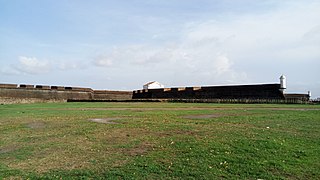
Fortaleza de São José de Macapá is a fort located in Macapá, Amapá in Brazil.





















